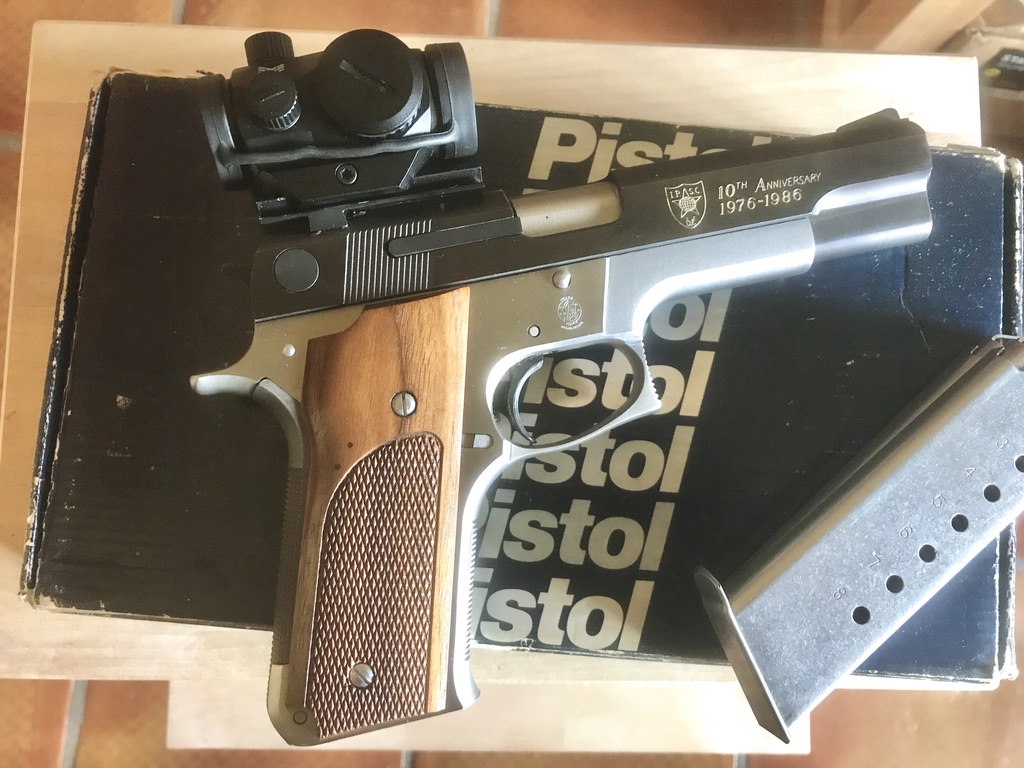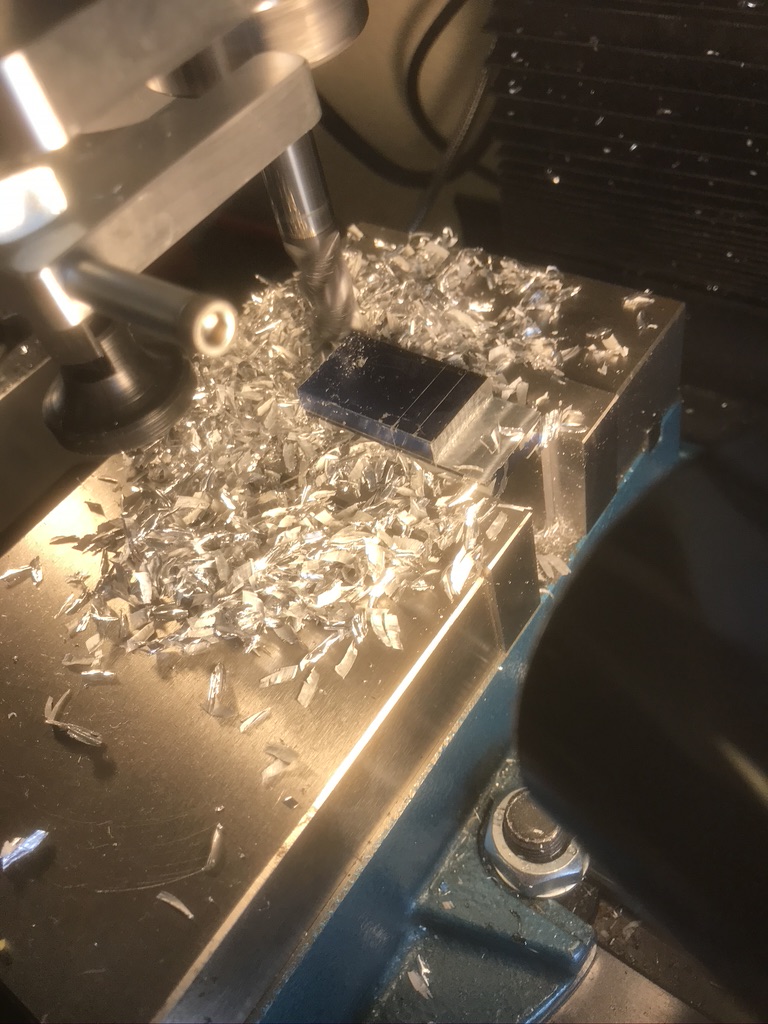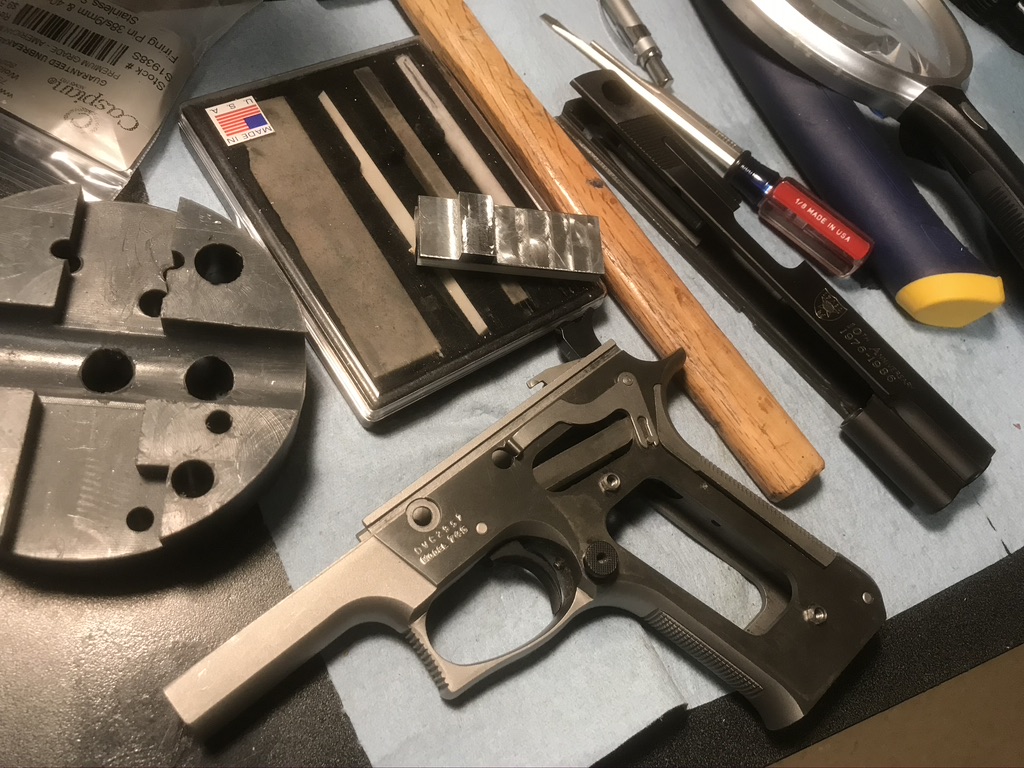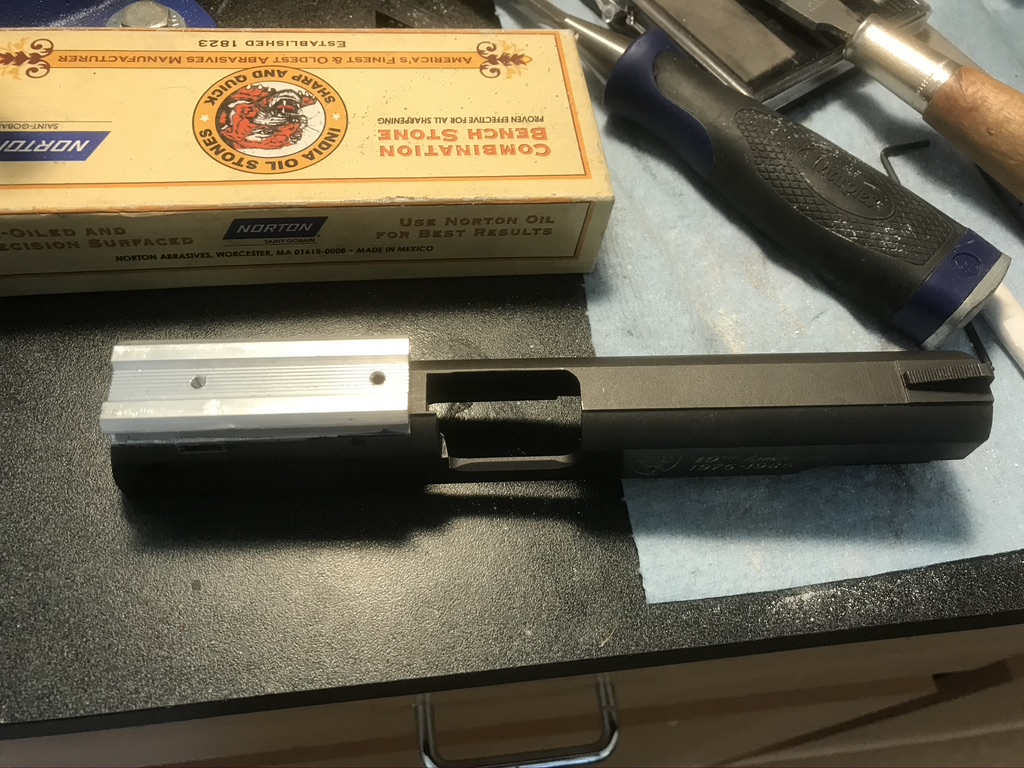
I have a love/hate relationship with 1911. I really admire the way the gun is designed, it is truly the JMB’s masterpiece work. I love working on 1911, enjoy building or accurizing them. And the only one thing I cannot do well is to shoot them. I simply cannot control the trigger, I take my sweet time to recover after the recoil and I’m never able to shoot any decent score in timed and rapid fire.
So with all this coronavirus panic and lack of other activities I decided to jump on a quest to find an alternative to 1911. And I came across a very interesting gun – Smith & Wesson model 745.
Smith and Wesson produced a number of very fine semi-auto pistols, of which model 52 is most known among bullseye shooters. But there were many other guns which shared the design with the model 52 (or actually it was model 39 which started it all) and chambered in common centerfire calibers such as 9mm and .45ACP – e.g. 952, 845, 945, just to name a few.
The model 745 was an improvement on early model 645. It was a single action single stack .45ACP, intended for use by IPSC shooters and produced in relatively small quantities in 1986-1990. If I remember correctly, there were only 5000 of them made, so they are somewhat rare.
So what would it take to make a 745 ready for bullseye? Well, not much, as it turns out. First, I machined a scope mount that goes to the rear dovetail instead of the rear sight. I made it slightly oversize for a snag fit and fitted to the dovetail using files. For additional security I drilled two holes, threaded them with 6-40 tap, and installed two small set screws.

The trigger was pretty good out of the box, but I disassembled the gun anyway, and polished the sear face and hammer hooks with a very fine ceramic stone. After some minor tweaking I ended up with exactly 3.5 pounds very crisp trigger.


Reduced strength recoil springs were supplied by Wolff Springs.
I tested it today at 25 yards and was able to hold the X ring. Then I moved the target out to 50 yards and after a few sight adjustments I was holding 10 ring (two-handed, unsupported). I think it’s a keeper!